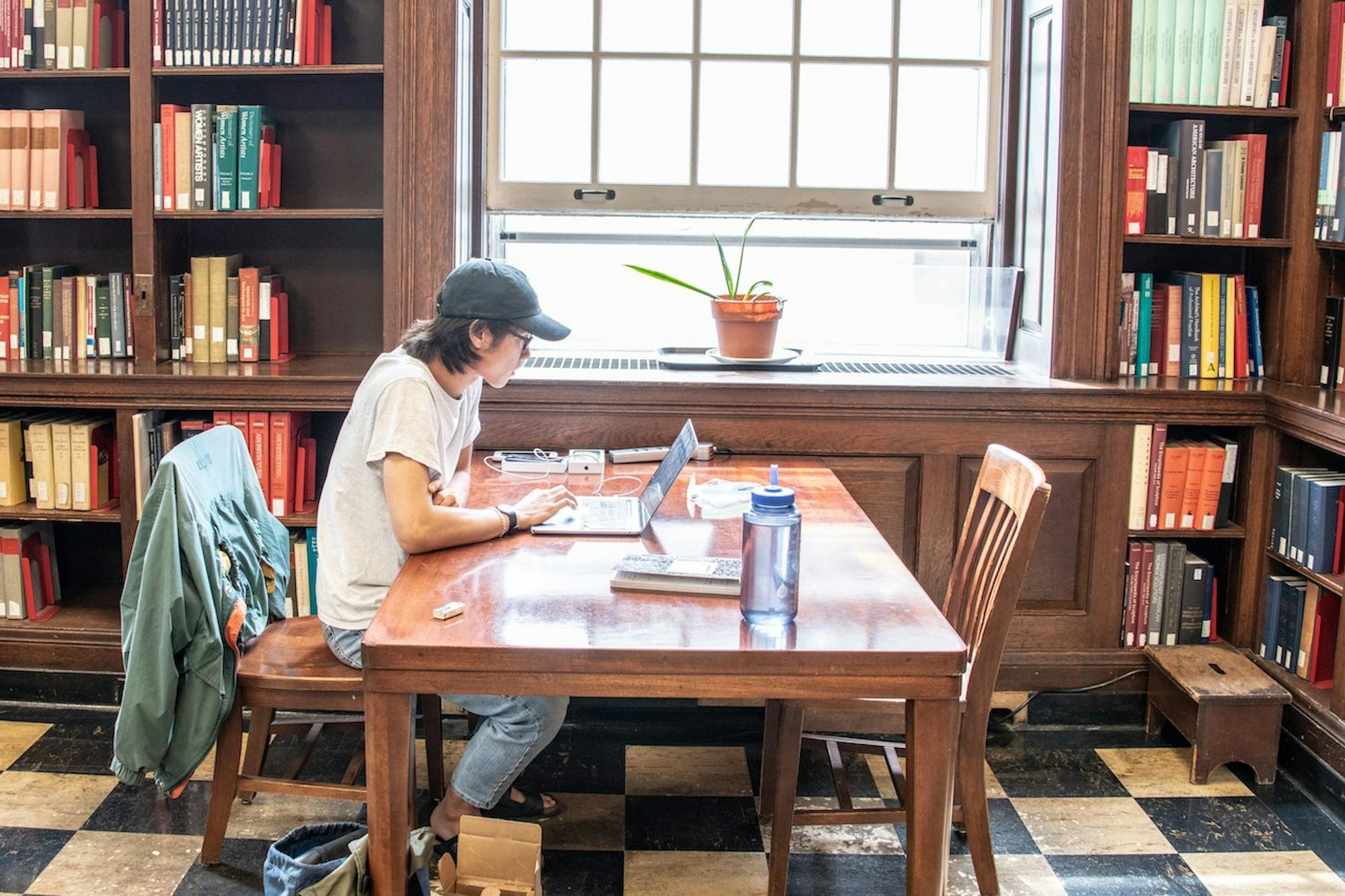This article is featured in the 2021 Freshman special issue.
If you ask any group of students about their favorite study space on campus, chances are that each one will have a different answer. While Baker-Berry Library might be one of the most prominent landmarks on campus, there are a variety of lesser-known library spaces that incoming students might not have discovered yet. As the Class of 2025 experiences campus life for the first time and returning students come back to libraries after a year of limited building access, here is an overview of some spots that you might not see on a campus tour.
The Evans Map Room, located on the second floor of Berry Library next to the Jones Media Center, houses a collection of physical maps for students to use in their research. History majors make up a large portion of students who use the map room’s services, map specialist Peter Allen said. Students can request physical maps to look at, and Allen said that staff will work to find any maps digitally if the library does not have a physical copy. Writing classes that focus on the idea of “place” also frequently request maps from the map room, according to Allen.
At Rauner Special Collections Library, located next to Baker-Berry, students can find not only reference and research materials, but also a quiet study space with lots of natural light and large windows. Rauner, which has two floors — a lower level where special collections works can be accessed and an upper space where students can bring their backpacks and study — is often visited by Dartmouth classes, whether as an excursion or as a place for students to research primary sources.
Special collections librarian for teaching and scholarly engagement Morgan Swan said that the space is appealing for students who are looking for a place to focus, since Rauner has less activity than Berry. Students are also able to speak with librarians at Rauner to find historical sources even if they don’t know what kind of information they are looking for, Swan said. Swan stressed the ease of access to historical documents at Rauner, saying that students are able to come in and, five minutes later, look at a medieval manuscript.
While the above spaces have been open for some or all of the pandemic, others on campus have only recently re-opened for the first time since COVID-19 shut down campus in March 2020. The Sherman Art Library, for example, reopened on Aug. 2 after library services worked with the College to ensure that there was proper ventilation for students to study there, according to associate librarian for research and learning Jennifer Taxman.
Chloe Jung ’23 said that as an art history major, Sherman’s location is perfect because it is attached to Carpenter Hall, which houses the art history department.
“Sherman is nice and warm, and there’s a lot of natural light,” Jung said, noting that the library’s large windows provide a nice view of Silsby Hall.
Jung added that the library gets her “into the headspace for studying” and that being “surrounded by books” helps her feel more “compelled to study” — in contrast to more open-concept libraries like Berry.
Sanborn Library, which is run by the English and creative writing department separately from the other libraries on campus, is another favorite study spot. English and creative writing department chair Andrew McCann described the “small, beautifully appointed” library as “one of the most atmospheric locations to study on campus.” The library is open to all students, not just those studying creative writing or English, McCann added, and he said that the space also doubles as a venue for department events, public readings and performances.
Sanborn holds “mostly novels or poetry” books, which students are welcome to check out through the administrative assistant on the third floor of the library, English and creative writing department administrator Kate Gibbel said.
Gibbel also said that the department “anticipate[s] that Sanborn Library will be open” this fall. The library’s windows will be open to aid in ventilation, though Gibbel said this decision may be revisited during the colder months of the year. She added that the usual weekday tea service offered in Sanborn might be replaced with other amenities, such as posters for students.
Skylar Miklus ’22 said that Sanborn Library, with its quiet atmosphere, armchairs and alcoves, is a great place to write essays and focus on “denser readings.”
“I can go into Sanborn and sit there for like eight hours, and when I come out, there’s a paper,” Miklus said.
Miklus also studies in the East Reading Room, where there are “big tables where you can spread everything out.” The room is quiet and full of natural light, they said, and the balcony area offers a “great view of the Green” through its upper-level windows.
Taxman said that furniture has been returned to study spaces where there is proper ventilation, and that the return of students has brought an “energy” to the library.
For students returning to campus after some time away, libraries may look a little different. In February, the College announced that Kresge Physical Sciences Library — located in Fairchild Physical Sciences Center — and Paddock Music Library — located in the Hopkins Center for the Arts — would be closed permanently at the end of spring term 2021, a decision that drew criticism from students, faculty and The Dartmouth’s Editorial Board.
Taxman said that efforts to move materials from Kresge to Baker-Berry are ongoing, and that part of Kresge will be open this fall for students to use as a study space. She added that materials from Paddock have not completely been relocated to Baker-Berry yet, and that the space will not be opening this fall. However, she said that the Hopkins Center is taking care of the library as the center goes through its renovation plans.




